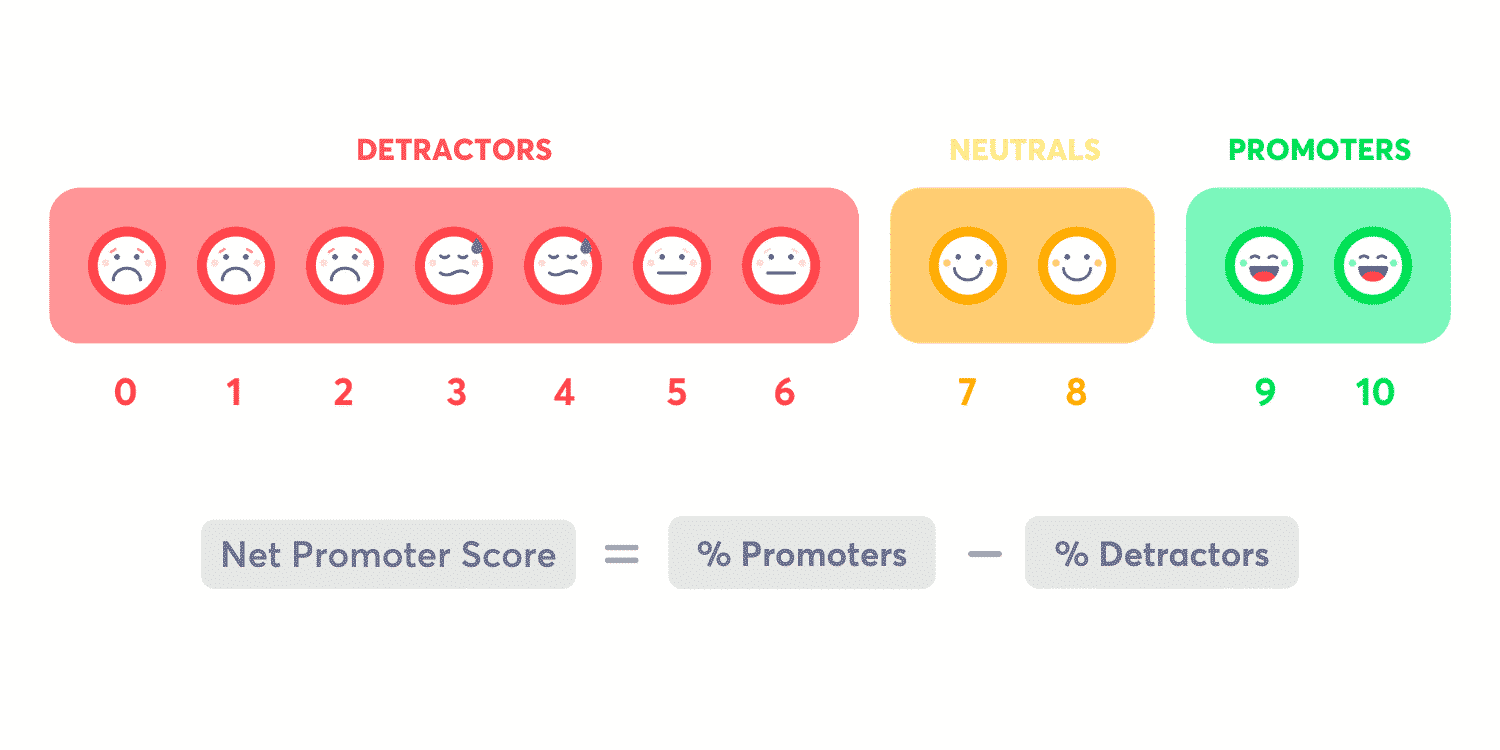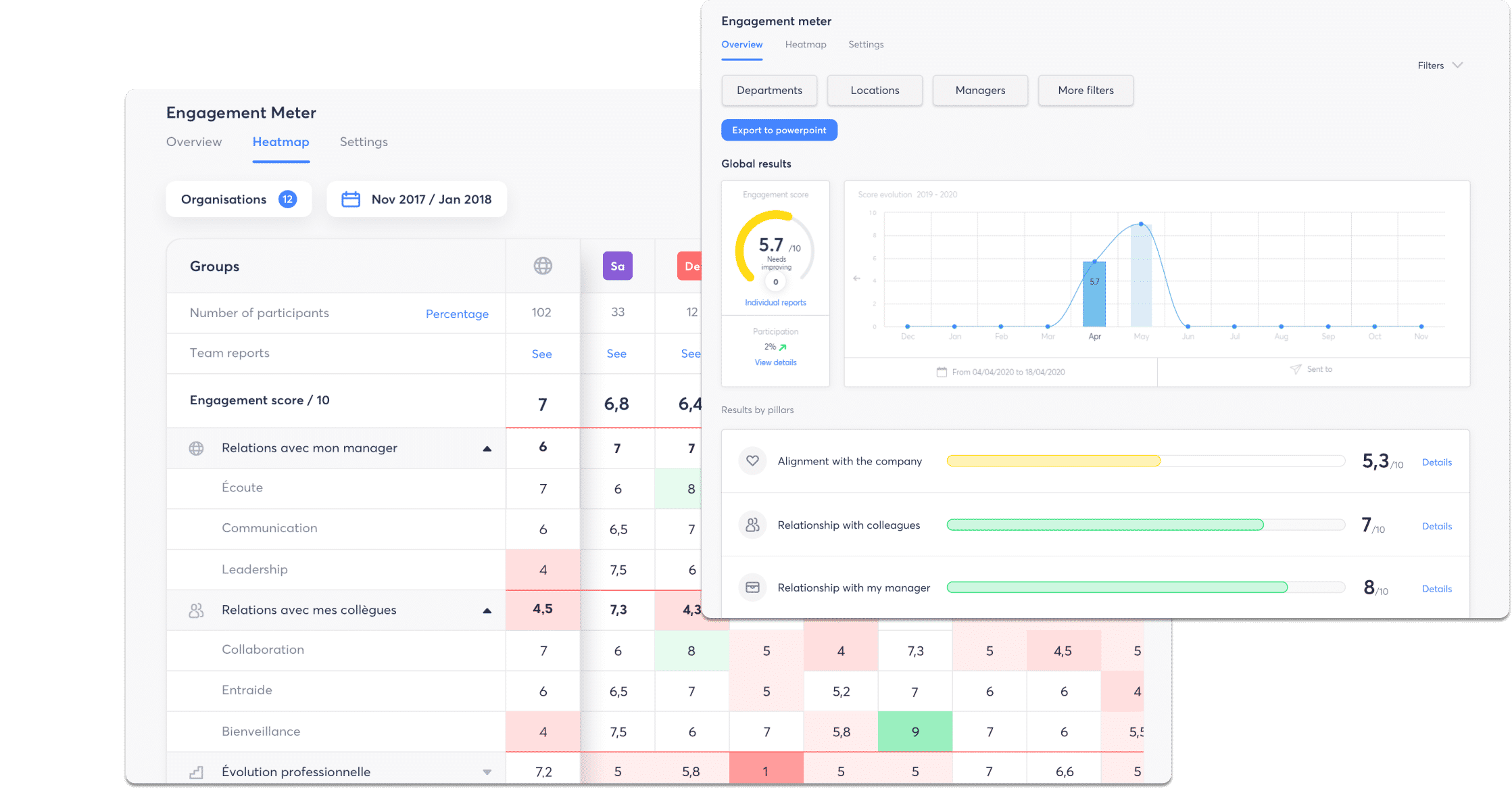The eNPS (Employee Net Promoter Score) for measuring employee engagement?
Au programme :
Le récap de l’article
Used by organizations such as Apple, Rackspace or Verizon, eNPS or NPS Employee is presented as the reference tool for measuring employee engagement. But, is it enough for a complete assessment of the state of your teams?
Used by organizations such as Apple, Rackspace or Verizon, eNPS or NPS Employee is presented as the reference tool for measuring employee engagement. But, is it enough for a complete assessment of the state of your teams?
How likely is it that you would recommend our organization to a friend or colleague ?
The answer is given on a scale from 0 (not at all likely) to 10 (very likely).
This question prompts respondents to rate the various aspects of their experience with the organization, and the rating they give reflects their overall level of commitment.
Recently, the eNPS methodology has been expanded to measure other aspects related to employee’s engagement, such as their loyalty, their trust in their company’s products or services and their overall satisfaction, through three additional questions:
Loyalty
If you were offered the same job you have, but in another company, how likely is it that you would stay in your current company ?Belief
How likely is it that you would recommend your company’s products or services to your friends and family ?Satisfaction
Overall, how satisfied are you working at your current company? Companies can decide whether or not to use these three questions in addition to the main question to complement the eNPS results. If they decide to use them, they will also need to take these answers into consideration when calculating their engagement score.What is the purpose of the eNPS or NPS employee?
Several studies prove it, commitment boosts teams’ performance. Committed employees become more involved in the life of the organization, which generates better results and reduces turnover rates. These figures speak for themselves:- 3 out of 4 employees have little or no commitment (worldwide)
- The cost of the disengagement is €12,600 per year and per employee.
- 19% of employees resign when they do not feel listened to by their managers
- 27% is the engagement rate of employees when their managers do not deal with issues that are important to them.
- But this rate increases to 63% when managers take action based on the results of employee surveys.
How to calculate the eNPS :
The first step in calculating your employee engagement score is to divide the answers to the eNPS questions into three categories:- Promoters: score 9-10
- Passives: score 7-8
- Detractors: score 0-6
- eNPS = % Promoters – % Detractors

The eNPS alone is not enough…
The eNPS only presents an overview of the current situation in the organization and does not really allow you to identify areas for improvement. It is therefore important to go beyond it by providing a more complete assessment of your employees’ engagement. Zest’s Engagement Meter divides engagement factors into six simple categories that your employees rate and comment on. It therefore makes it possible to identify the most important areas for your employees thanks to 18 Key drivers defined by a PhD in psychometrics. Polls can also be used at an organization-wide level, or at each department, to invite employees to give their opinion on one or more topics.💡 Find out more about Zest’s engagement meter and “Listen” pillar.

Our expert’s advice :
It is essential to go beyond the simple measurement of employee engagement and transform it into concrete actions. To do this, you need to identify the values that motivate your employees and activate these drivers.
.
